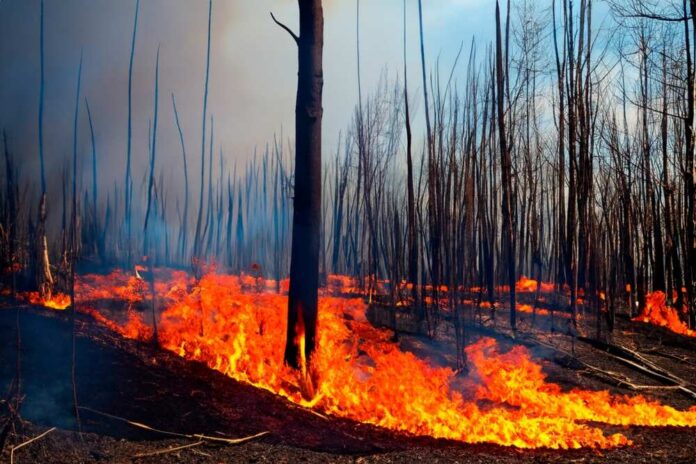
The wildfires raging through Maui, leaving devastation in their wake, have been eagerly seized upon by activists as undeniable evidence of a climate catastrophe. These advocates demand a national state of emergency from President Joe Biden. However, their fervent cries overlook a critical dimension of the problem. Namely, many of these disasters are spawned by man-made threats which, had they been addressed in time, could have averted or minimized such a tragedy.
Dr. Clay Trauernicht, a renowned Wildland Fire Science and Management Specialist at the University of Hawaii at Manoa, raised the alarm in 2014. In his research with Pacific Fire Exchange, Trauernicht revealed that humans were introducing “nonnative, fire-prone grasses and shrubs” to Hawaii, which now “cover nearly one-quarter of Hawaii’s total land area.” Such actions amplify wildfire threats. Even reputable outlets such as Forbes acknowledged his perspective, citing his warning against poor forestry practices.
DEMOCRAT HAWAII GOVERNOR FAILED: Hawaii warned of man-made threat years before lethal wildfire, but activists scream 'climate' now | Just The News https://t.co/QFiDyWOiPF
— 🇺🇸 JimAaron 🇺🇸 (@ArOkTxNm1) August 11, 2023
Remarkably, a 2020 study discovered that these invasive plants contributed to more than 85% of the land destroyed by wildfires in 2018. However, amid the current destruction, the predominant narrative being peddled — especially by platforms like The Guardian and CNBC — has been primarily centered on climate change.
Kaniela Ing from the Green New Deal Network is a prime example of this climate-focused narrative, pushing for more aggressive legislation without solid evidence to support his assertions. Though compelling, Ing’s portrayal of Maui’s destruction as a manifestation of “colonial greed” and capitalism’s pitfalls lacks nuance and complexity.
Still, blaming this on weather and climate is misleading. Hawai'i's fire problem is due to the vast areas of unmanaged, nonnative grasslands from decades of declining agriculture.
— Clay Trauernicht (@claytrau) August 9, 2023
What’s being overlooked is a critical perspective echoed by Trauernicht: the need for proper planning, resource allocation, and a keen understanding of local ecosystems. “Hawaii’s fire problem could be far, far more manageable with adequate support, planning, and resources for fuel reduction projects,” he posted on X, formerly Twitter. Grasslands in Hawaii, he explained, accumulate fuels quickly. While climate conditions may enhance the risk, better practices can manage the root problem.
This is maddening but also good news – Hawaii’s fire problem could be far, far more manageable with adequate support, planning, and resources for fuel reduction projects, agricultural land use, and restoration and reforestation around communities and the foot of our forests.
— Clay Trauernicht (@claytrau) August 9, 2023
And it’s not just Hawaii facing this rush to link every disaster directly to climate change. Consider the wildfires in Canada. Many were quick to sound the alarm bell of climate change. Yet, in a typical season, lightning causes half of Canada’s wildfires, with the rest being the result of human activities, from carelessly discarded cigarette butts to sparks from passing trains, as noted by the Milwaukee Journal-Sentinel.
"Are you prepared to declare a national emergency with respect to climate change?"
BIDEN: "We've already done that"
"So you've already declared that national emergency?
BIDEN: "In a practical— you have a bug on you" pic.twitter.com/XZ7sNKHCEM
— RNC Research (@RNCResearch) August 9, 2023
The demands for declaring a climate emergency, fueled by sensationalism and fear, are potent. During an interview with The Weather Channel, President Biden seemed to suggest that his administration had “practically” but not officially declared such an emergency. Yet, the implications of such a move are vast. As Tim Steward, the U.S. Oil and Gas Association President, pointed out, such a declaration could threaten free speech rights, echoing the suppression seen during the COVID-19 state of emergency.
It’s clear that the climate is changing, and proactive steps are essential. But it’s equally important to remember that not every natural disaster is solely the outcome of climate change. Often, it’s a combination of human interference, neglect, and external factors. Addressing the root causes, like the invasive grasses in Hawaii, can be as crucial — if not more so — than lofty declarations and political posturing.














